
Kaliningrad is a city with a rich history that dates back to 1255. In this connection, there are many attractions, interesting objects and places for walking and recreation in the city.
For the convenience of sightseeing, walking and recreation, there are places in the city center (parks, squares, lakes and embankments), as well as whole routes and historical areas, after walking through which you can not only relax, but also visit and see the main places of interest and immerse yourself in the history of the city.
List of the most popular and interesting places to walk in the center of Kaliningrad
Fish Village is an ethnographic and trade and craft complex located in the heart of Kaliningrad, on the banks of the Pregolya River (Veterans Embankment).
The complex "Fish Village" is stylized as the pre-war East Prussian city of Koenigsberg. The complex itself is small, stretches from the Honey Bridge connecting the fish village with the island of Kanta to the High Bridge and is an embankment.
Cafes, restaurants and shops are located on the embankment, there is an observation tower "Mayak", the 4-star Kaiserhof Hotel, the 3-star Skipper Hotel and the hotel "At the Honey Bridge", and from the piers of the Fishing Village you can go for a boat trip along the Pregolya River. More about the fishing village...
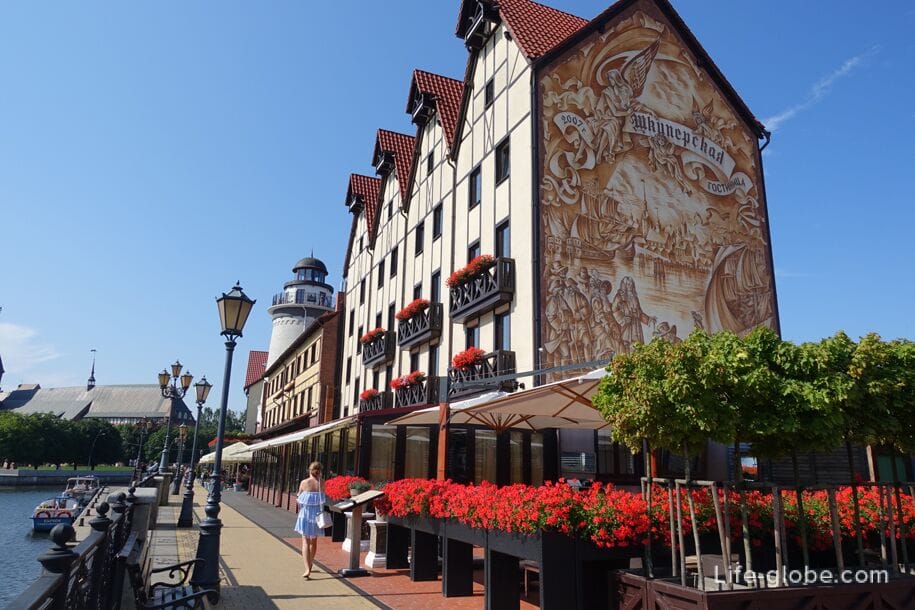
Kant Island, full name Immanuel Kant Island is a historical non-residential island part of the city of Kaliningrad, located surrounded by the Pregolya River.
The main attractions of the island of Kant are: the Cathedral, the grave of Kant and the sculpture Park, as well as Honey bridge connecting the island with the Fishing Village.
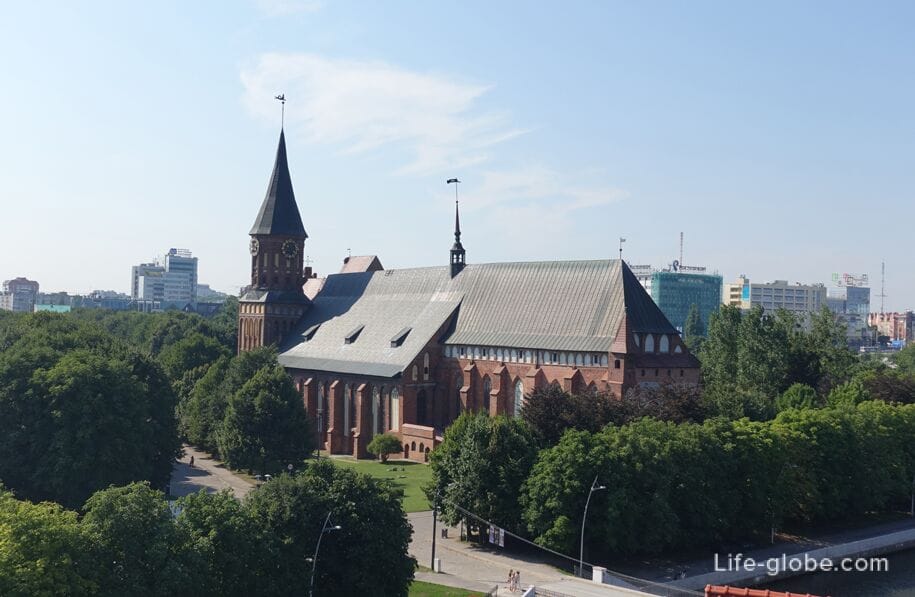
Peter the Great Embankment is located in the center of Kaliningrad, on the north side of the Pregolya River, near Kant Island and the Cathedral.
Initially, there was a port near the embankment. The port facilities in Koenigsberg were built from the 17th century. They often burned, then rebuilt and changed.
Today, gazebos, places for walking and recreation are equipped on the embankment, there are also historical and educational exhibits.
The most popular and interesting part of the Peter the Great embankment is the embankment of the Historical Fleet, at the pier of which are moored the museum vessels included in the complex of objects of the Museum of the World Ocean.
On one of the museumized vessels - the vessel "Vityaz", there are guest cabins "Vityaz" in which, if desired, you can stay.
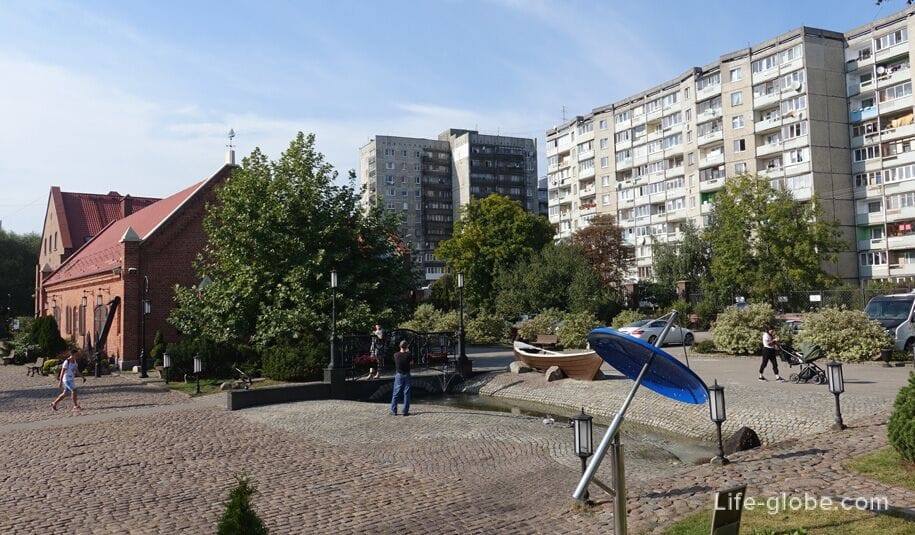

In addition to the embankments of Peter the Great and Veterans, in the center of Kaliningrad, along the Pregolya River, there are several more embankments that can become one of the places for walking in the city.
Along the embankments there are places for walking and relaxing, bike paths run.
These are such embankments as:
- admiral Tributs Embankment. There is a memorial sign for Baltic sailors near the embankment;
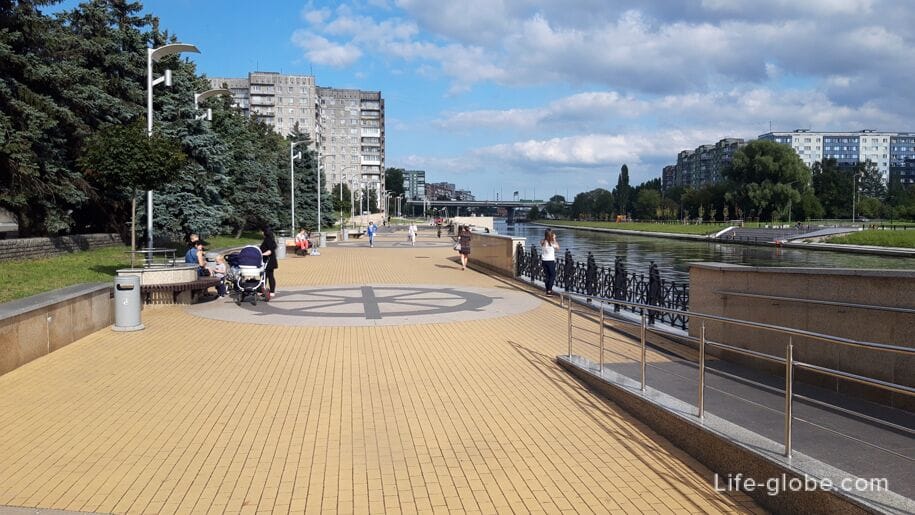
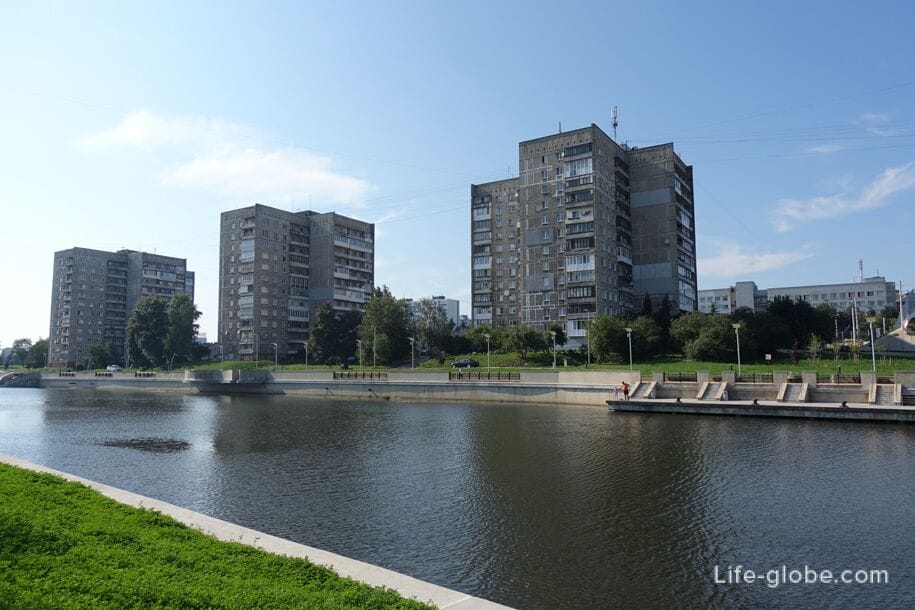
- the embankment of General Karbyshev. There are children's and sports grounds on the embankment;


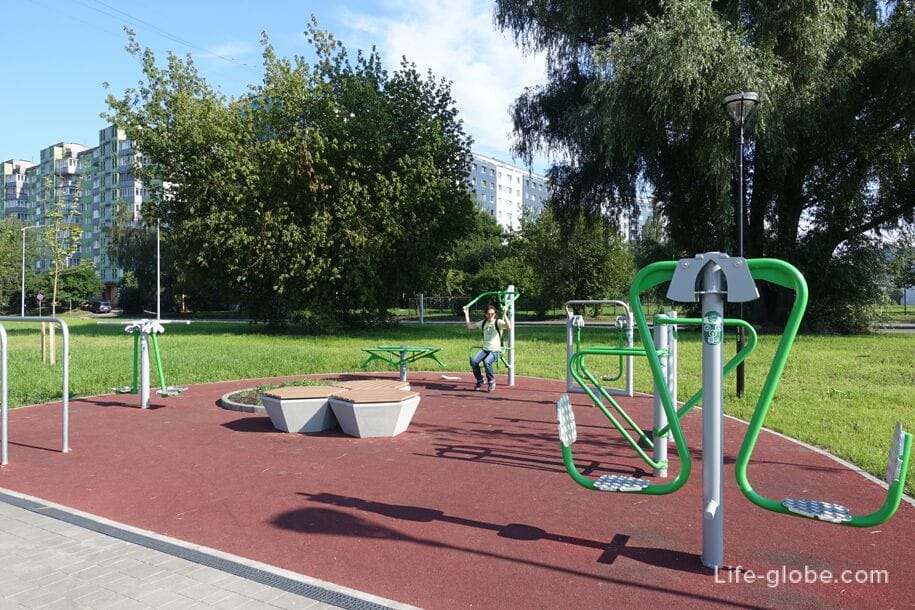
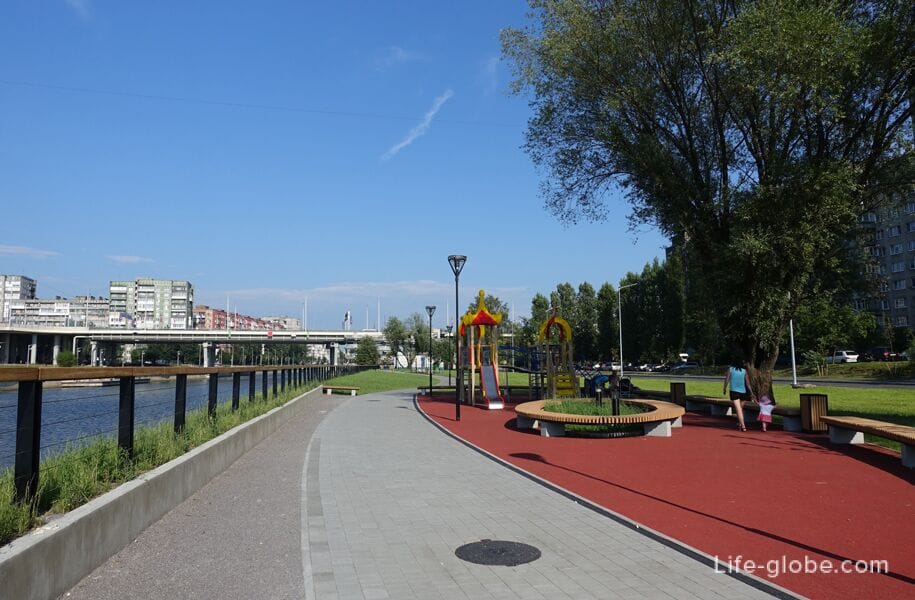
- Veterans Embankment, which runs along the river from the High Bridge in a south-easterly direction (towards the Second Overpass Bridge).
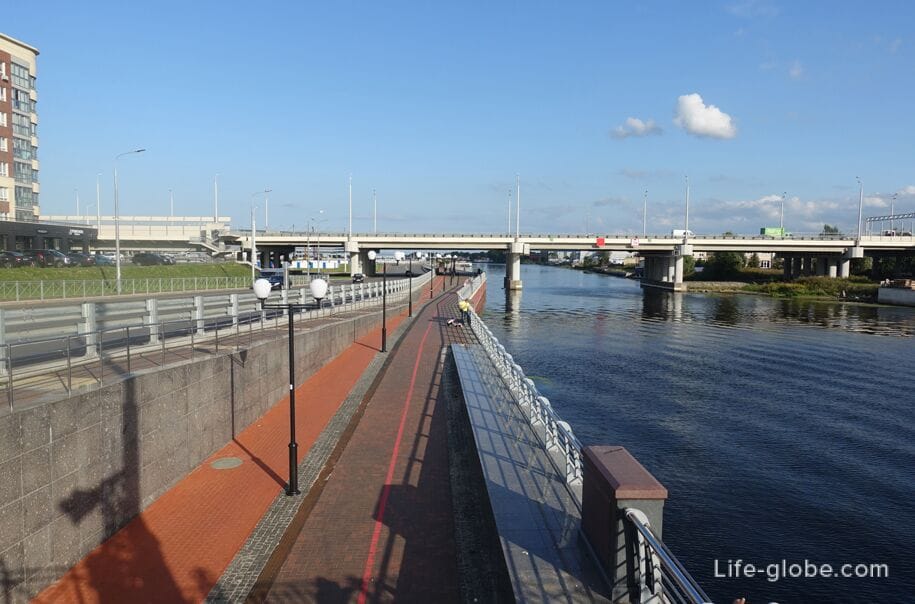
Mira and Leninsky Avenues are one of the main, as well as the most visited and interesting streets of the Kaliningrad city center.
Both streets are carriageways, with pedestrian sidewalks on both sides.
Along the avenues are some of the most important historical buildings in the city, there are several public gardens where you can relax, Park, zoo, stadium, theater, Museum "house of the whaler" (shows the situation of a communal apartment Kaliningrad Soviet period 1960-1980 years), the ruins of the castle of Königsberg, the "House of the Soviets", the former stock exchange, fountains, sculptures and monuments, as well as cafes, restaurants and shops.
The following accommodation facilities are located along the avenues: 3-star Hotel Moscow with free private parking, free Wi-Fi, restaurant, bar and family rooms; and, 3-star Hotel Kaliningrad with 2 international restaurants and free parking.
Learn more about Mira and Leninsky Avenues (+ Teatralnaya Street)…
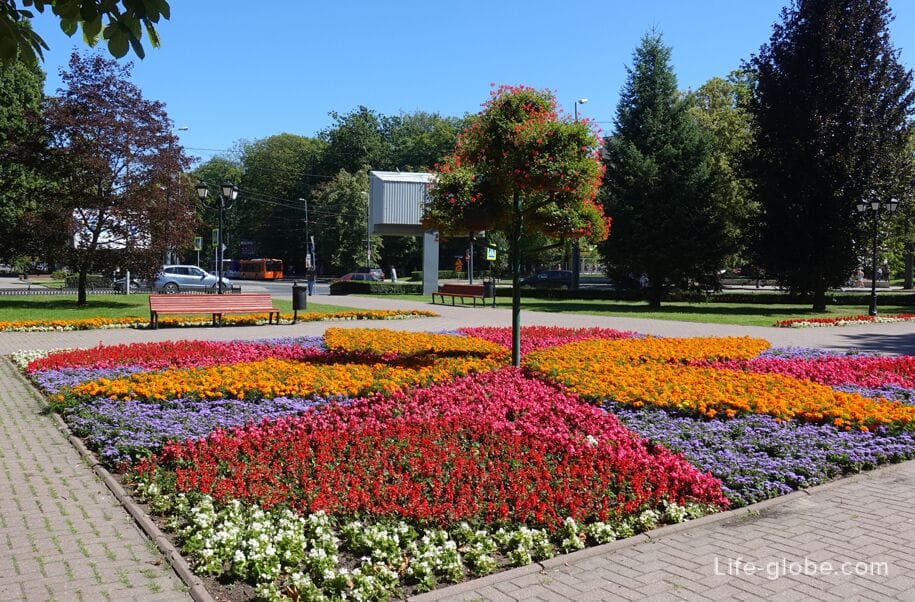
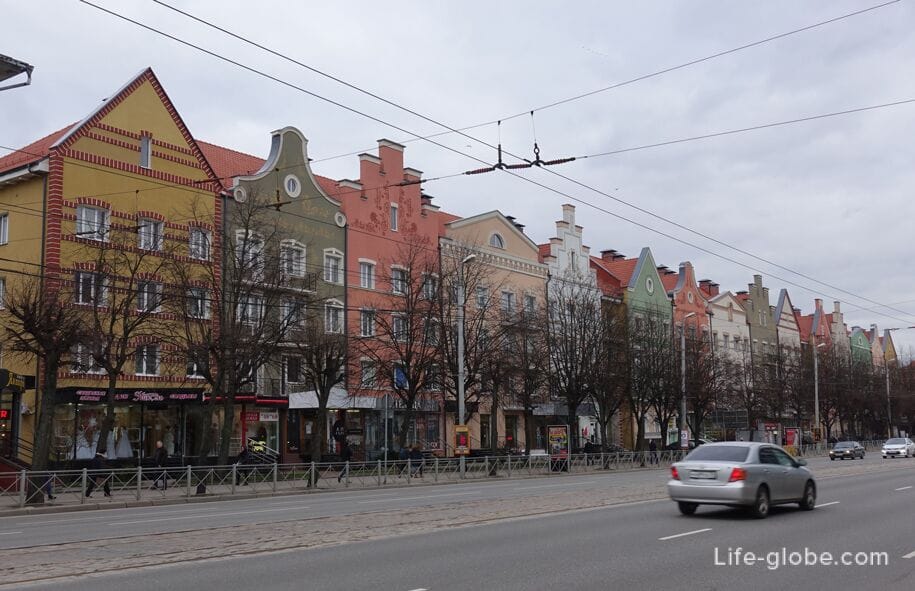
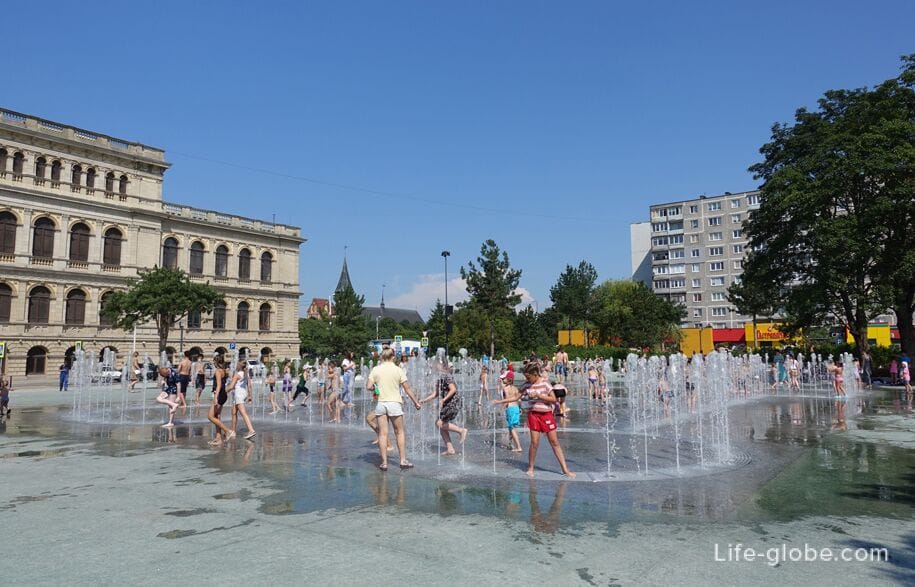
Victory Square is the central square of Kaliningrad and the link of many tourist routes around the city.
On the square: places to relax, several fountains, flowers and low trees with lush crowns, a Triumphal column and the Cathedral of Christ the Savior.
Administrative and commercial buildings are located around the square.
Near Victory Square there are such accommodation facilities as: 4-star Radisson Blu Hotel Kaliningrad with spa center, free Wi-Fi and underground parking; and, 3-star EUROPE Hotel and Apartments located in the Europe shopping center.
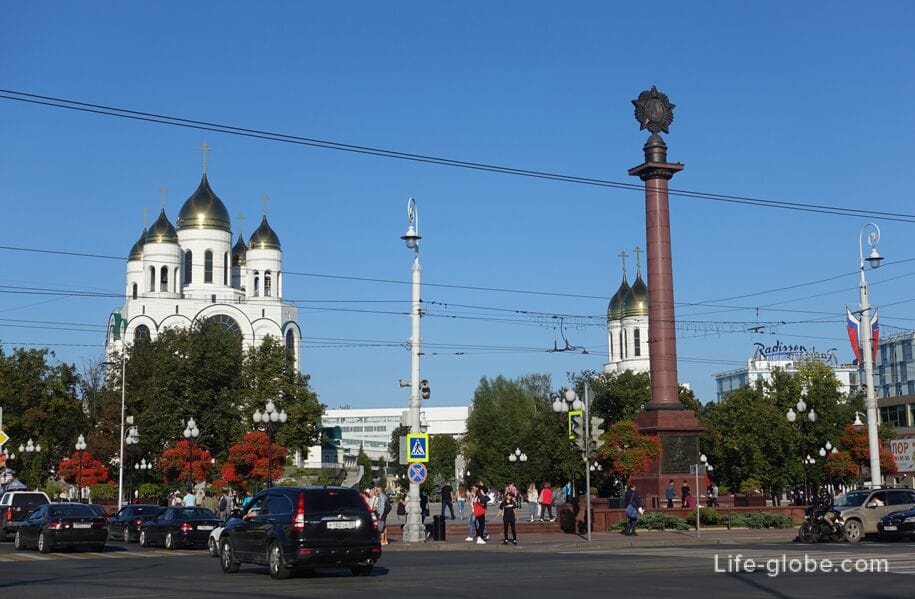
The unpaved Handel Street is located in the center of Kaliningrad, near Victory Square.
This street is notable, first of all, because at the corner of Handel Street and Sovetsky Avenue there is a historic building of the former police presidium (Polizeipräsidium), erected in 1912.
The building is made of red clinker brick, in the neo-Renaissance style. It has a quadrangular elongated shape with courtyards. The right wing is decorated with a balcony with a terrace. On the main portal there is a relief made of shell rock, the central element of which is the head of an ancient warrior. More about the police presidium building...
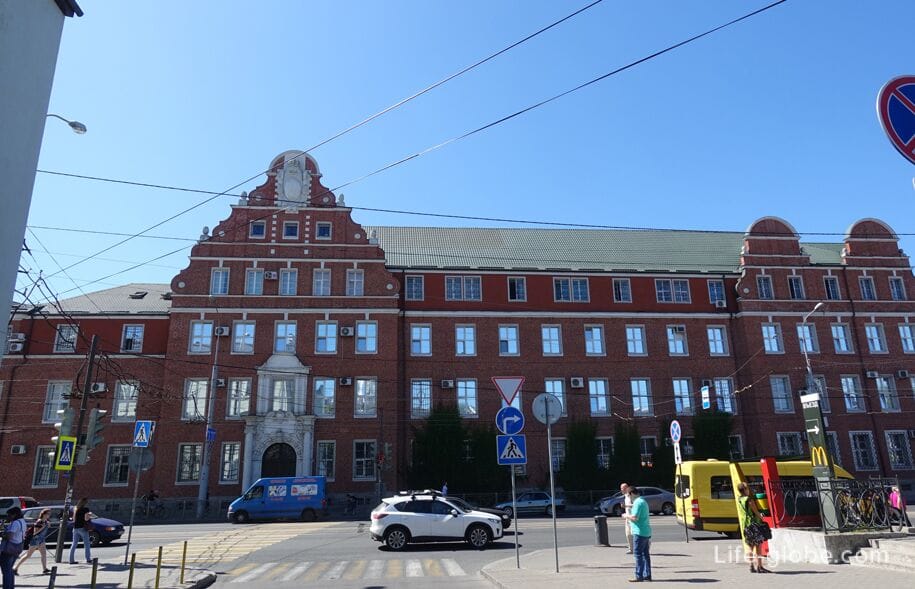
Photo of Handel Street
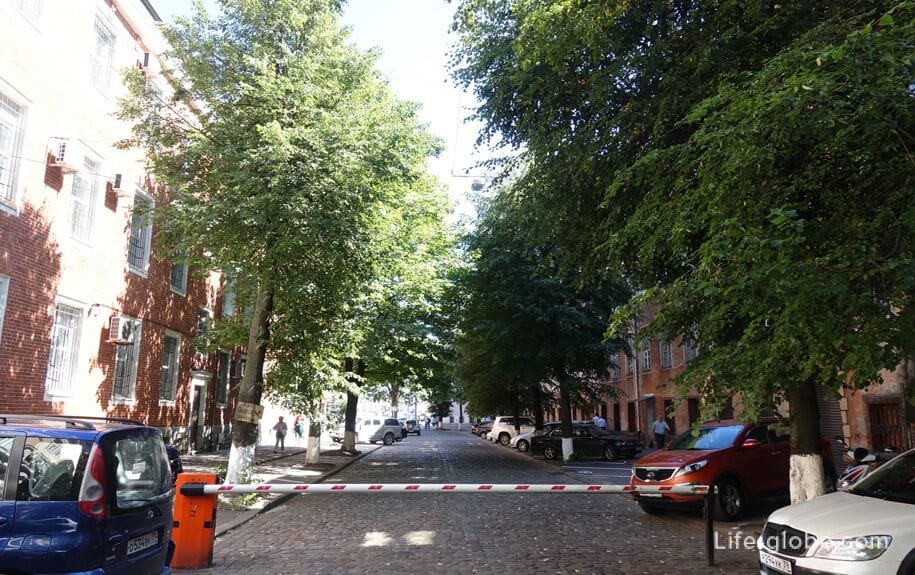
Professor Baranov Street is not a popular and significant place for walking.
However, it was restored not so long ago, it is pedestrian and there are places for recreation along it.
This street can become a link - a good option for moving between the central market of Kaliningrad, the Epicenter entertainment center, the Acropolis shopping center and the Upper Lake.
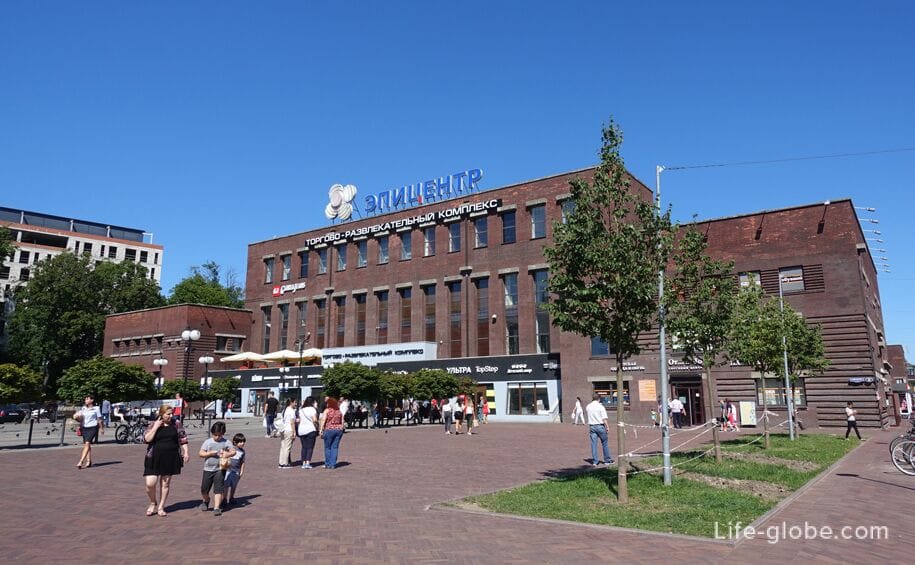

The Upper Lake or Upper Pond is a reservoir of artificial origin and is particularly popular for walking and recreation among citizens and guests of the city.
The lake has an irregular elongated shape, with two bays in the northern and an extension in the southern part.
Along the lake runs a gentrified embankment with a bike path, there is a 4-star Mercure Kaliningrad hotel, residential buildings, bridges, playgrounds and sports grounds, recreation areas, Yunost Park, a boat station and several historical attractions.
Ducks and swans live in the lake.
Near the Upper Lake there are: the Wrangel Tower; the Dona Tower, which now houses the amber Museum; Rosgarten Gate; Yunost Park and the Maraunenhof historic district. Learn more about Upper Lake...
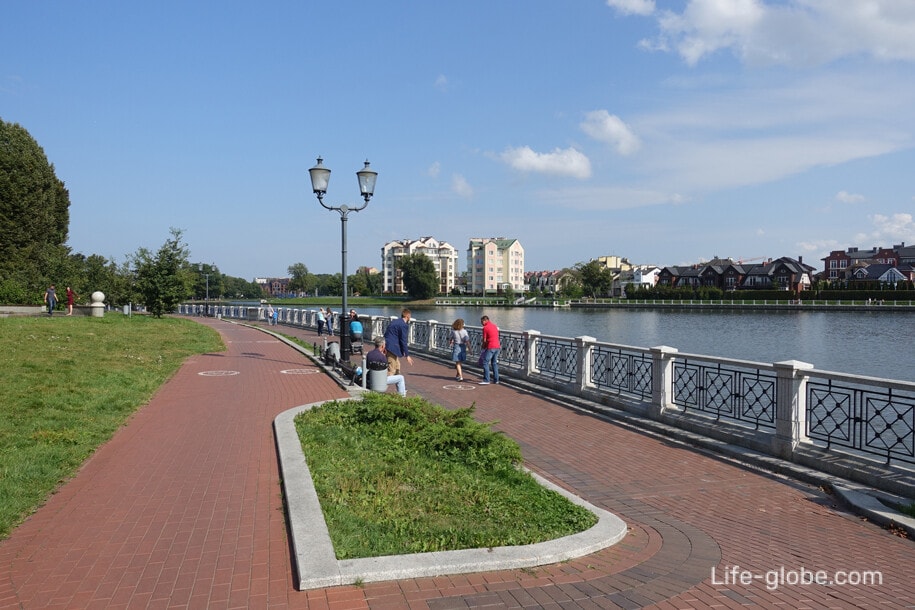
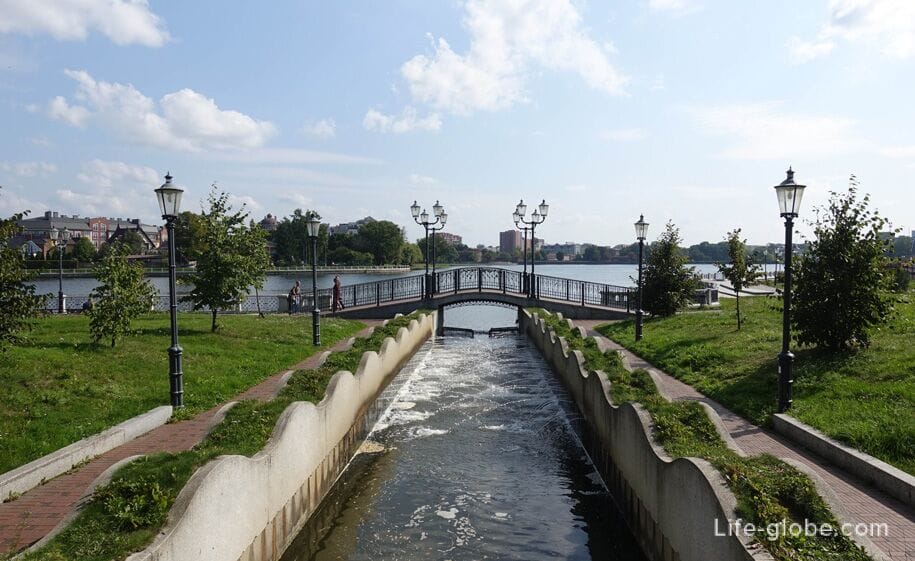
According to visitors, the Yunost Park is considered one of the best parks in the city for family recreation and entertainment.
On the territory of the Park there isan amusement Park for children and adults, a Ferris wheel, trolls, boat station, 5D cinema, winter indoor ice rink Ice arena, go-kart, adventure Park, trampolines, a "House upside down", the pond area for walking and recreation, centre for the development of interpersonal communications, as well as a cafe and a food court.
The park is located near the Upper Lake, at the intersection of Telman, Azovskaya, Zemelnaya and Gorky streets. More about Yunost Park...
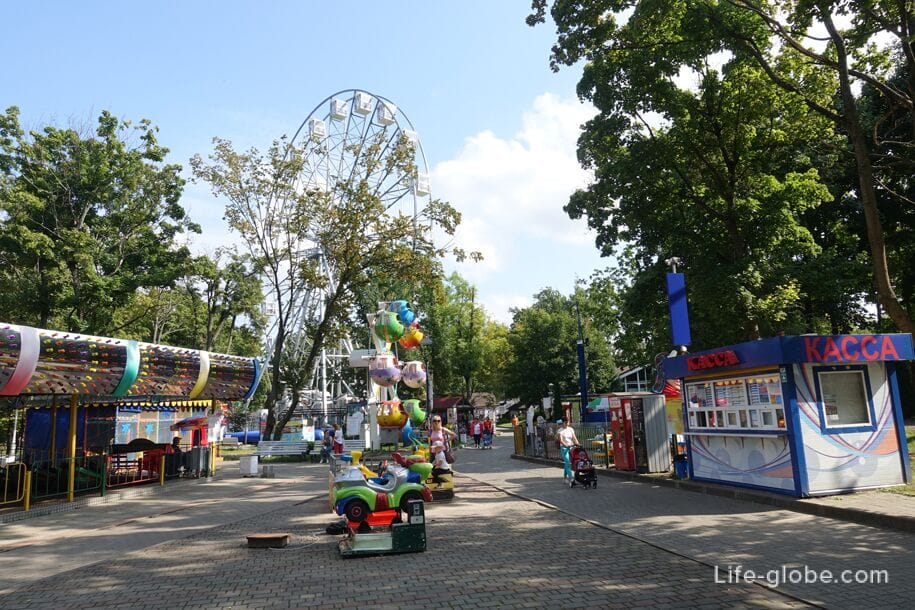
Maraunenhof is a historical district of Kaliningrad, which was once a suburban quarter of northern Konigsberg.
The property in the Maraunenhof area has been located in a forest area since 1571. The district finally emerged and began to develop at the beginning of the 20th century.
In the Maraunenhof area, mostly private mansions and elite housing were built, either in the Art Nouveau style or in the style of a country type, with the architecture of a rural German house.
Currently, the Maraunenhof district is a remnant of the historic German quarter, with cobblestone streets and still preserved, albeit few, houses of the former Konigsberg. More about the Maraunenhof area...
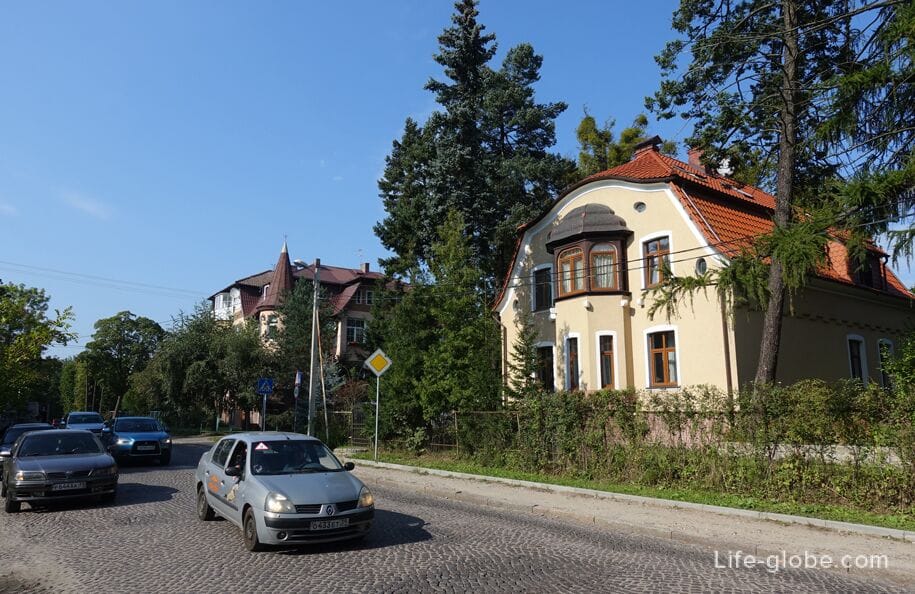
The Lower Lake or the Lower Pond (Castle Pond) is one of the oldest structures of Konigsberg that has survived to the present day.
The area around the Lower Lake is a green relaxation area.
The pond is crossed by several bridges. There is a boat station on the lake during the summer season. Swans and ducks live in the lake.
There are places for walking and relaxing around the lake, there are monuments, the 5-star Crystal House Suite Hotel & Spa and the "Castle Pond Cascade" - a water cascade built in Konigsberg in the 1929-1930s and feeding the Lower Lake from the Upper Lake.
Near the shores of the Lower Lake, you can visit: the Kaliningrad Regional Historical and Art Museum and the Bunker Museum. Learn more about the Lower Lake...
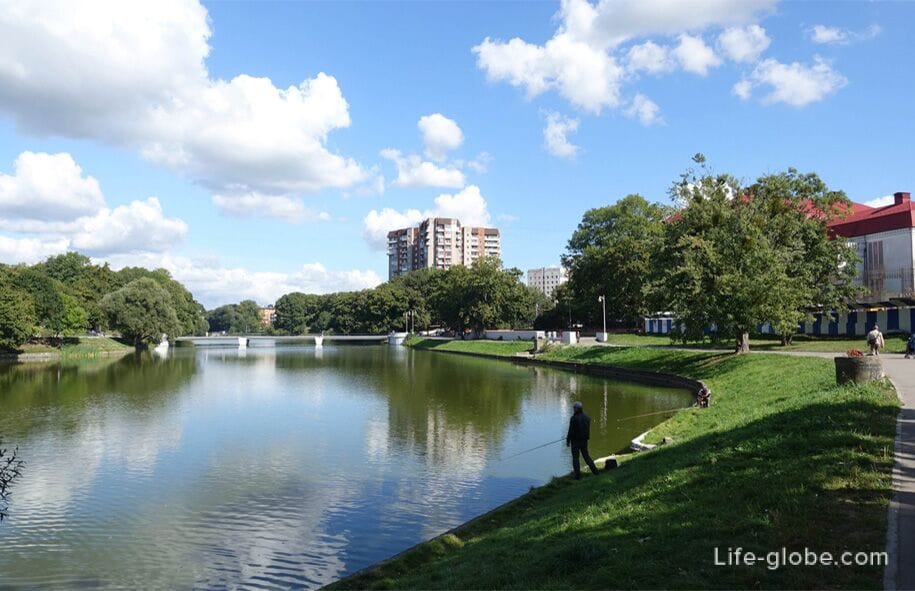
Kaliningrad Zoo is one of the largest and oldest zoos in Russia.
At the moment, the zoo occupies an area of 16.7 hectares, on which there are aviaries with animals, a bird house, a terrarium, an aquarium, an arboretum, sculptures and monuments, a playground, a square with a fountain, as well as recreation areas, gazebos, ponds, cafes and snack bars. Learn more about the Kaliningrad Zoo...

The Central Park of Culture and Recreation (formerly Kalinin Park) is one of the most visited parks in Kaliningrad.
Many plants and trees that were planted in the pre-war years have been preserved in the park.
In the park: alleys for walks, places to relax, fountains, a children's area with attractions, kiosks with snacks and food, the church of Queen Louise (now the regional puppet theater), sculptures and monuments. More about Central Park...
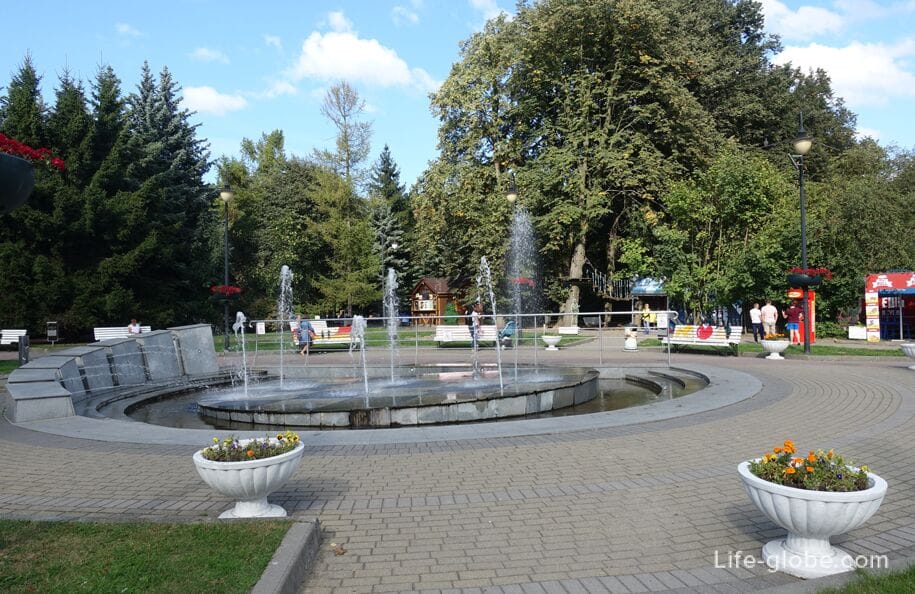
Amalienau - a former prestigious suburban quarter (district) Konigsberg, now part of the Central District of Kaliningrad.
Amalienau was known for its luxury villas, which already at the beginning of the 20th century had gas, electricity, water and sewerage. Villas in the Amalienau area were built for the wealthy class of residents, had unusual and luxurious, at that time, decorations and exterior details.
The current Amalienau is one of the sights of Kaliningrad and a popular tourist route. In Amalienau, you can see some preserved villas from the period of Konigsberg's construction, there is a church, monuments, small squares and quiet cozy streets.
Also in Amalienau there is a small pond - a Float pond or a Bread lake. There is an embankment along the lake, there are places for recreation and a playground. Bridges are equipped across the channels of the pond. More about the Amalienau area...
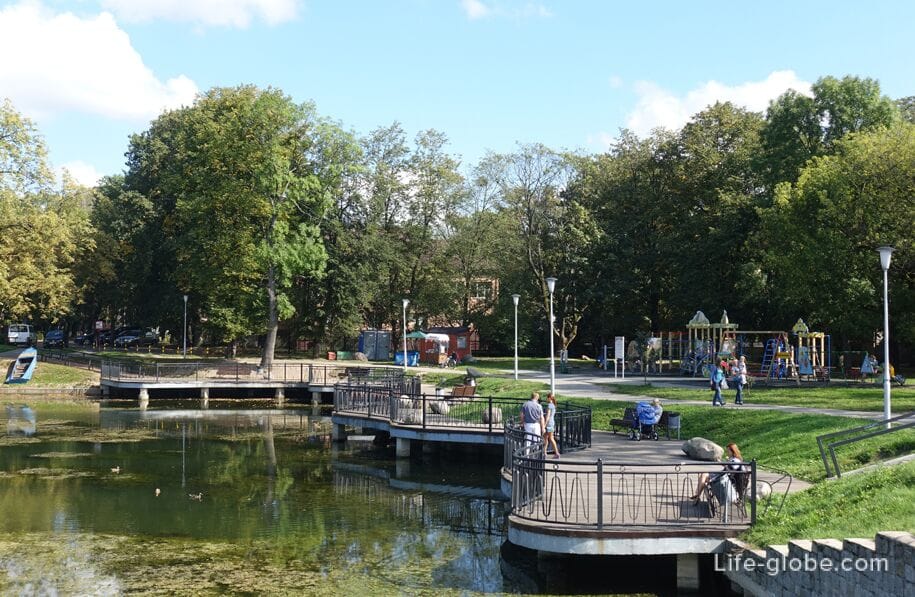
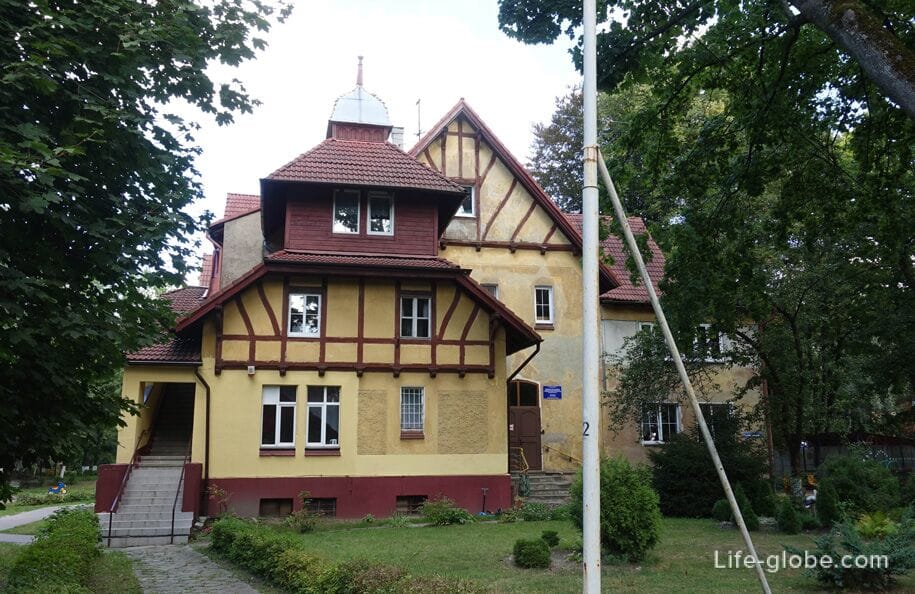
Initially, Konigsberg was founded as a castle and was a fortress city throughout almost the entire history of the existence of Konigsberg.
During the history of the city, two protective belts (rings) were created around the city, surrounding the entire Konigsberg with fortifications along a circular perimeter:
- The second fortification (defensive belt), which included: ramparts (earthen embankment), ditches, defensive barracks, bastions, Fort Friedrichsburg, defensive towers and walls, barracks and entrance gates to the city;
- the outer protection belt, which was located more remotely from the city and included a ring of forts that were used until the end of World War II.
After the Second World War, some of the objects of fortifications were restored and museums, art spaces, restaurants or shops are located in them today.
Currently, the recommended route "Kaliningrad fortification" has been laid in Kaliningrad, taking a walk along which you can see all the preserved, now reconstructed, remains of former fortifications. Learn more about the route and objects "Kaliningrad fortification"...
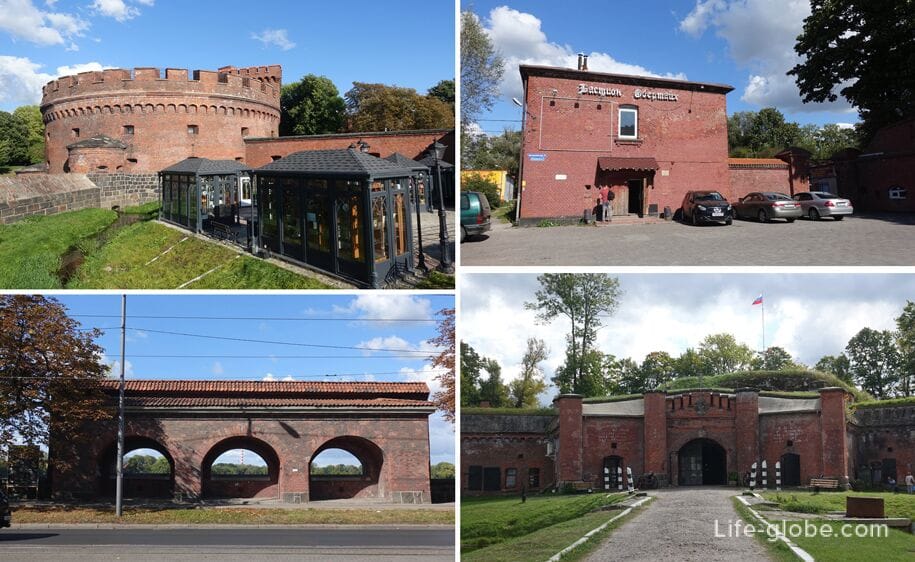
Victory Park, the full name is the park of the 55th anniversary of Victory.
The park was founded by veterans of the Great Patriotic War on May 8, 2000, in honor of the 55th anniversary of the Victory. Now the park is an open-air memorial complex with paths for walking and places for recreation.
Near Victory Park there are: the Ausfalsky Gate with the Orthodox chapel of St. George the Victorious, the Railway Gate and the reduit of the Astronomical bastion. More about Victory Park...
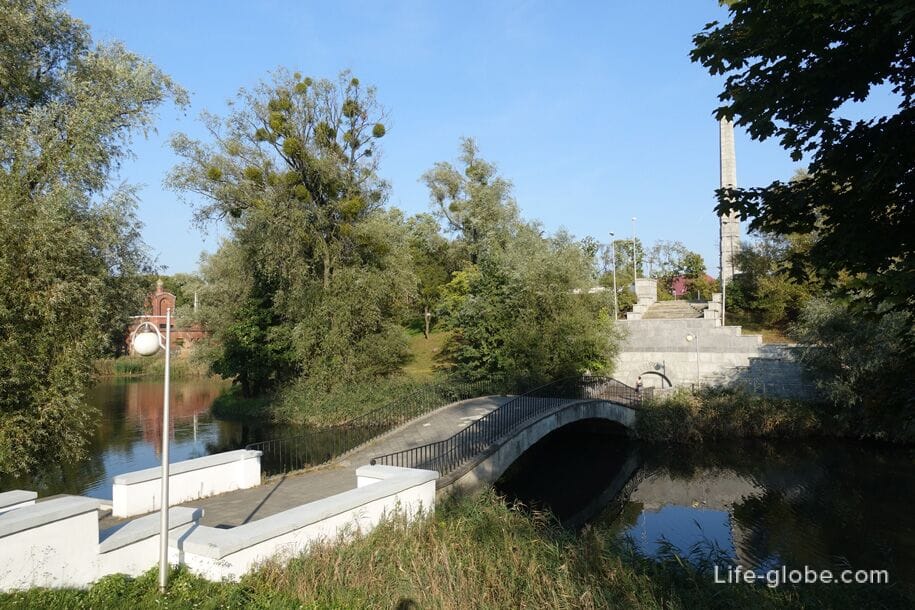
The landscape park was founded in 1805. In 1806 it was transferred to the University of Albertina and in 1810 its transformation into a scientific and educational division of the university began.
This park is not a popular place for walking, it is small, quiet and peaceful. In the park: an abundance of greenery, there are flowers and places to relax.
Entrance to the park is paid. The address of the park: Botanic Street, 2.

The Botanical Garden of the Immanuel Kant Baltic Federal University covers an area of 13.57 hectares. and his collection includes more than 2,500 plants.
The Botanical Garden on its present site was founded in 1904.
On the territory of the botanical garden there are: greenhouses, greenhouses, a pond, a nursery of woody plants, collection areas of herbaceous and woody plants, utility rooms.
Address of the botanical garden: 12 Lesnaya Street.
One and a half kilometers from the botanical garden are: the Church of St. Adalbert and the international memorial cemetery of the victims of World War II.
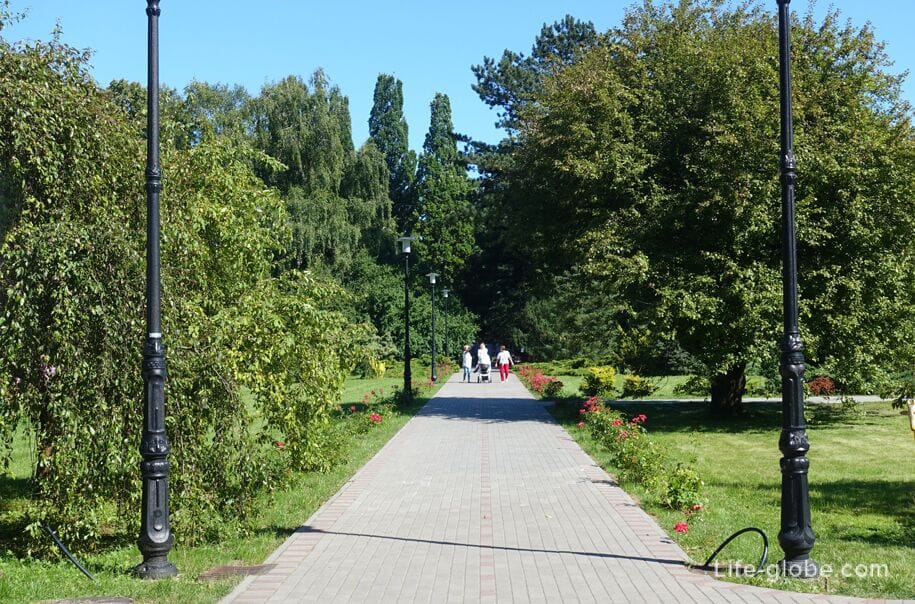
Max Aschmann Park traces its history back to the time of Kenegsberg and at that time bore the German name Max-Aschmann-Park (Max-Aschmann-Park).
Currently, the park is a green area, more like a forest belt (subjective opinion), for walking and recreation.
In the park: paths and paths for walking; there are several lakes, the largest of which is Lake Lesnoye, the territory near which is used by citizens for picnics and recreation; a children's and sports playground.
Near the Max Aschmann Park there are: the Church of St. Stepanos and the church of St. Gerasim Boldinsky. More about Max Aschmann Park...
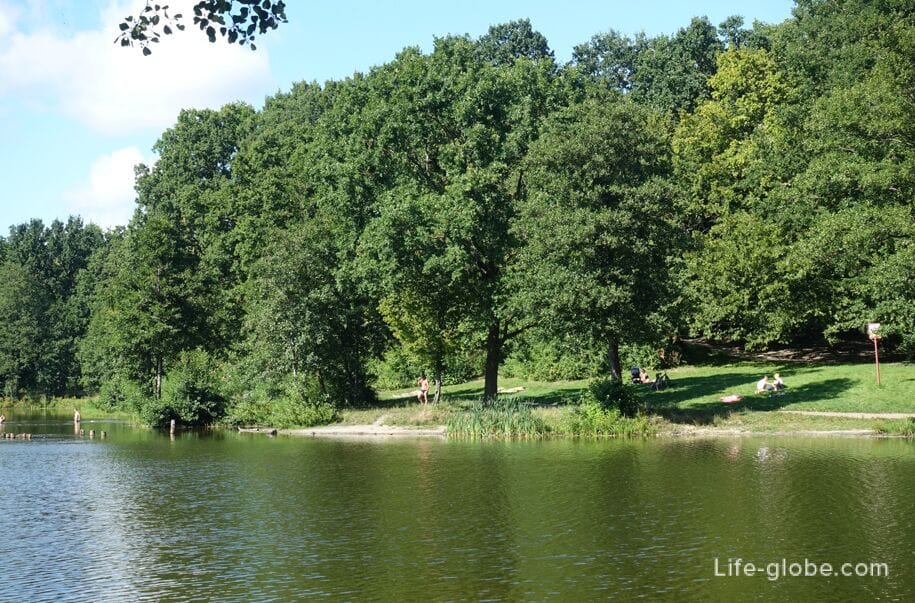
Kalinin Avenue, together with Kalinin Square, by itself, as a street, is not attractive and popular.
However, there are several places and objects of interest to visit along and near the street:
- the center of Kalinin Square is decorated with a monument to M.I. Kalinin, installed in 1959. The work of sculptor B. Edunov and architect A. Gulyaev.
The sculpture of M.I. Kalinin is cast in bronze. It is installed on a pedestal of pink granite, on which the coat of arms of the USSR and reliefs of fifteen flags representing the Commonwealth of the Union republics are carved;

- Brandenburg Gate (Brandenburger Tor), originally built in Konigsberg in 1657 and subsequently underwent significant changes, reconstructions and restoration and maintenance work.
Within the walls of the Brandenburg Gate there is a marzipan shop-museum. Learn more about the Brandenburg Gate...
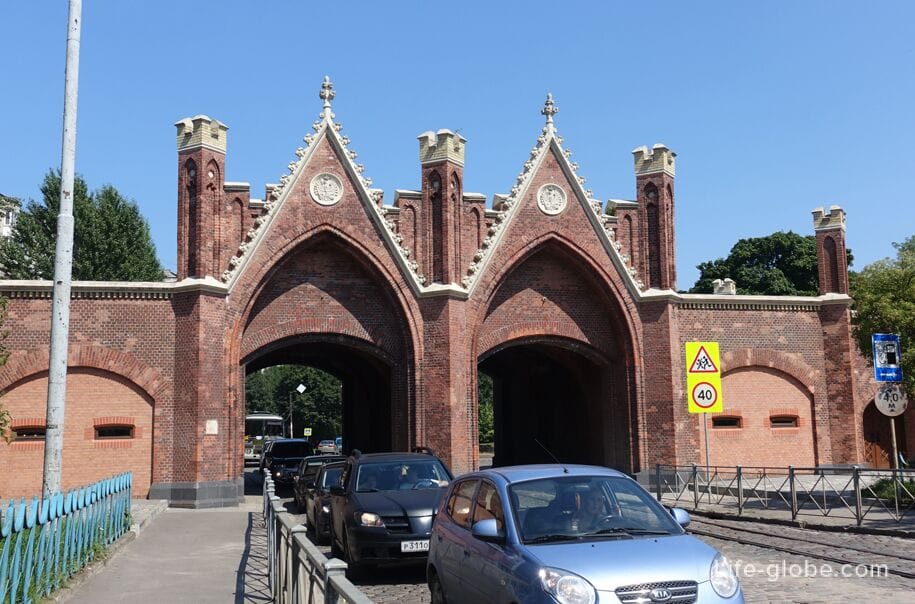
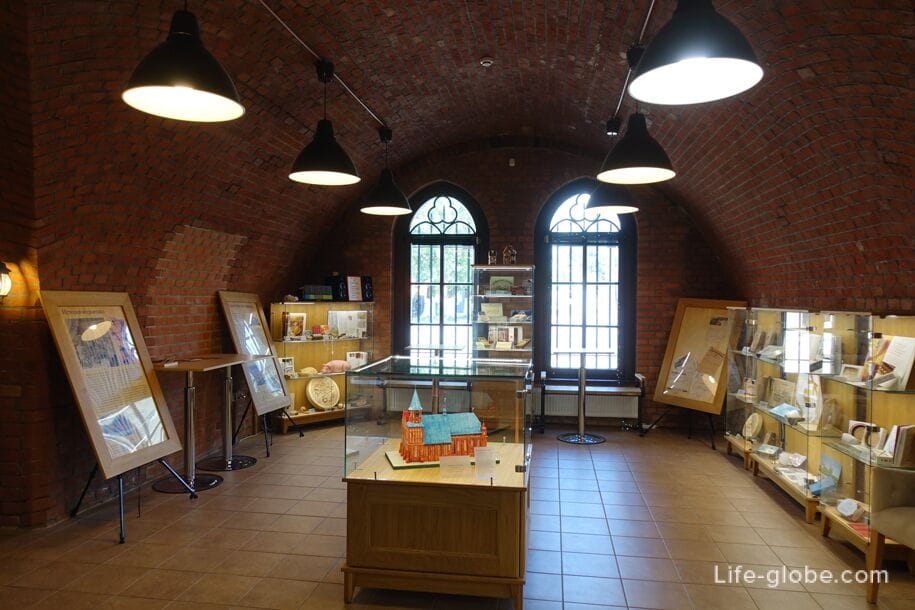
- Yuzhny Park, which is a green array of irregular rectangular shape with alleys and paths for walking, reservoirs (ponds), monuments, children's and sports grounds.
In Yuzhny Park there is a miniature park "History in Architecture", where models of the main architectural masterpieces of "big" Russia, made in miniature, are presented. More about Yuzhny Park...
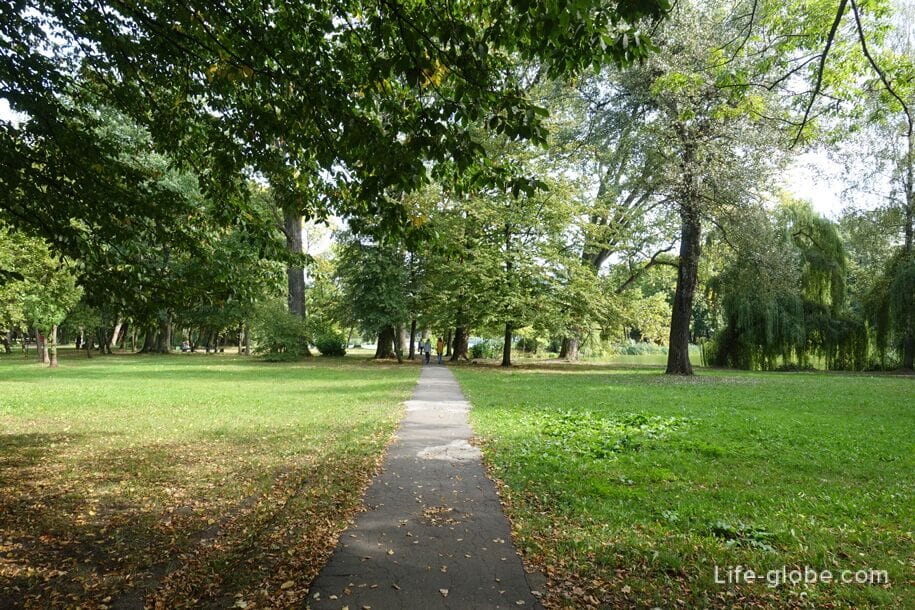
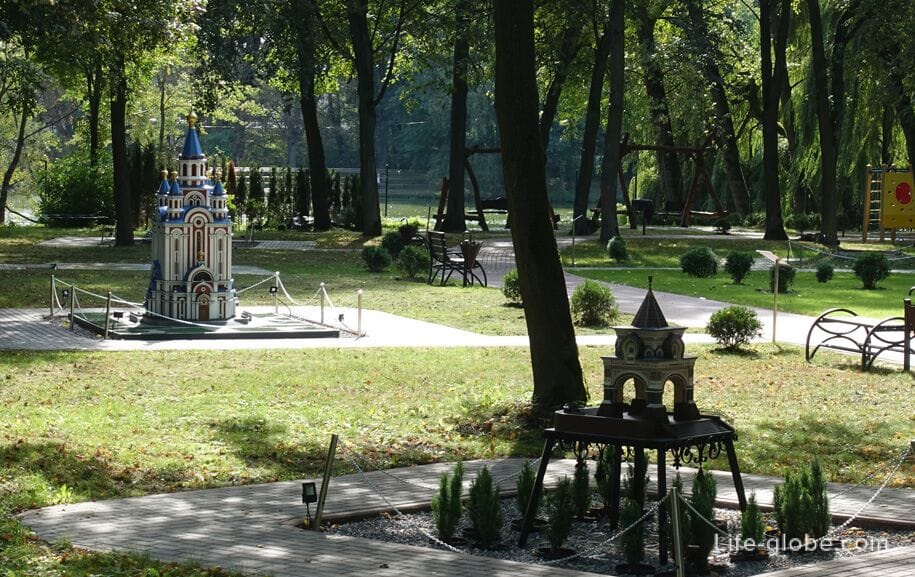
- The Church of the Holy Family (Kirche "zur Heiligen Famile"), erected in Konigsberg in 1904-1907 by architect Friedrich Heitmann.
Now the concert hall of the Kaliningrad Regional Philharmonic named after E.F. Svetlanov is located in the walls of the church. More about the Church of the Holy Family...
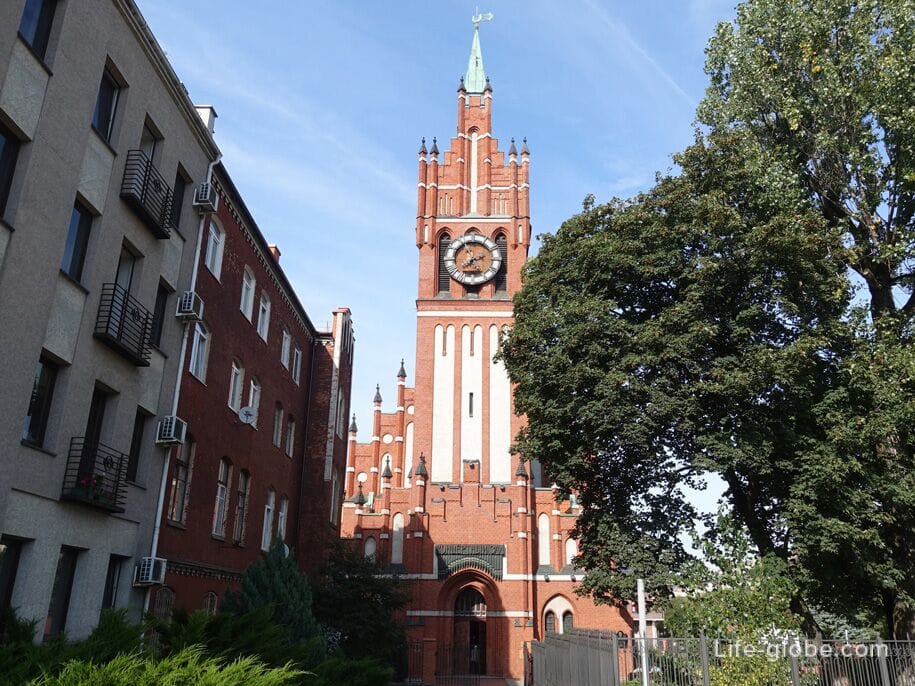
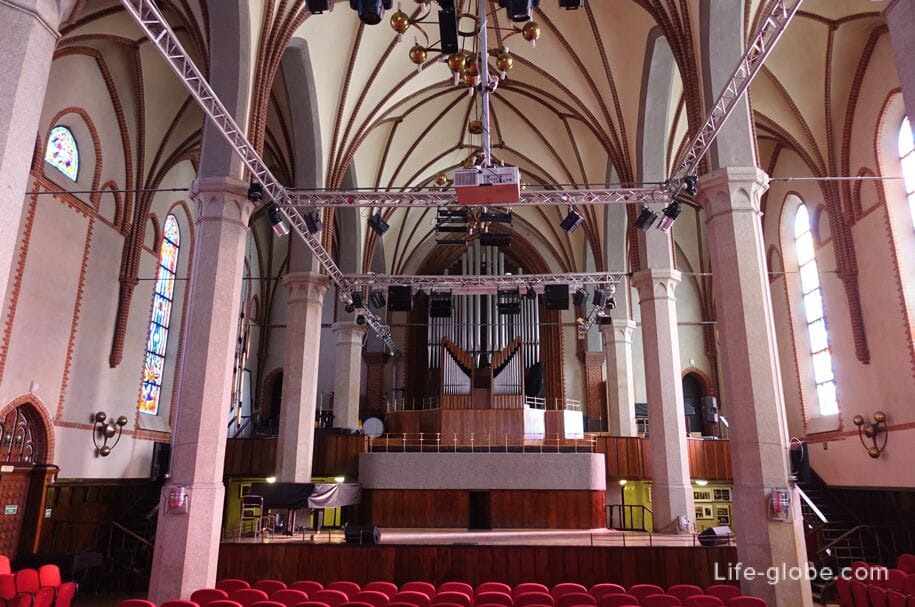
- memorial sign of Soviet-Polish friendship (architect E.A. Popov) 1977. Address: Olshtyn lane, 9;
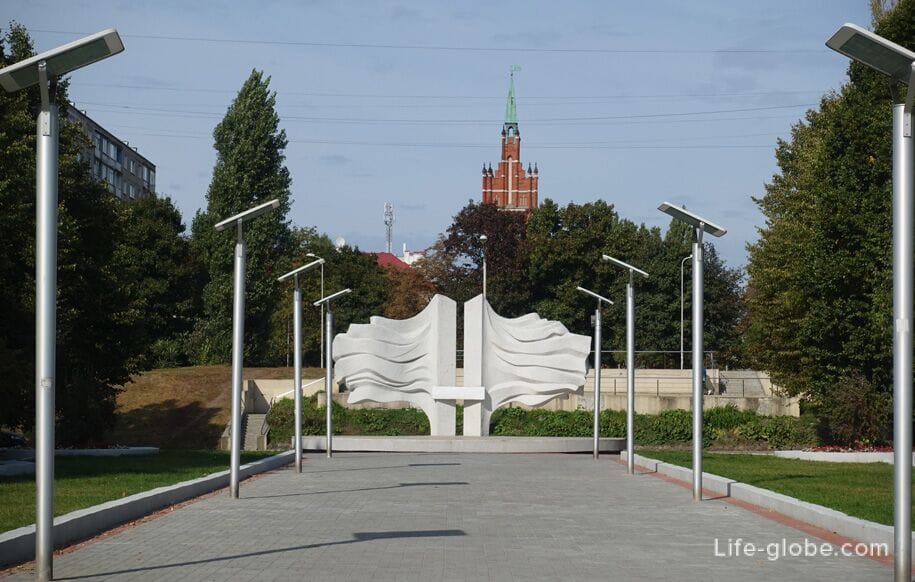
- quartermaster barracks building, built in 1890.
The building is made of red brick. In architecture, there is a passage (passage) to the courtyard of the barracks and the courtyard itself. More about the quartermaster barracks building...
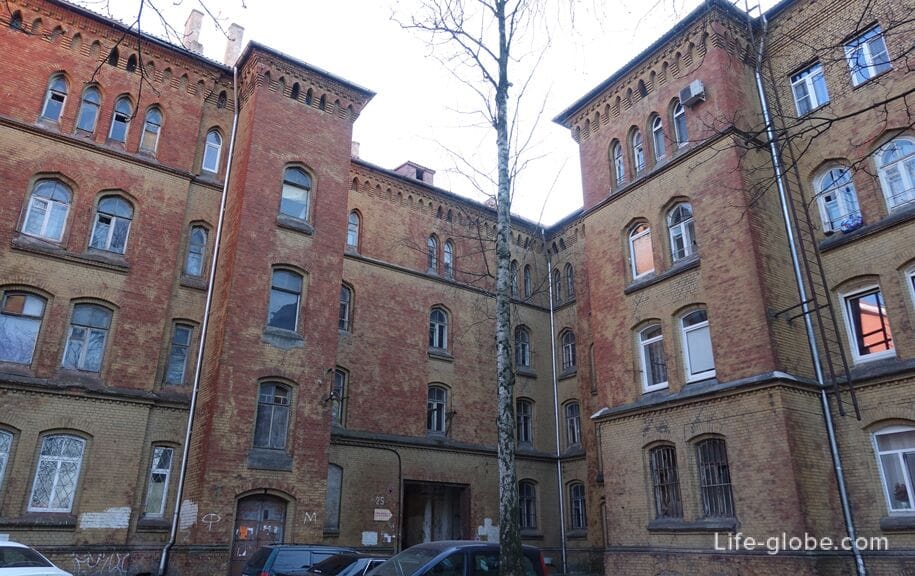
- Friedland and Haberberg ravelins, interconnected by a bulk shaft.
The ravelins were erected in the 19th century by Ernst Ludwig von Aster. Now they consist of reduits, caponiers and semi-caponiers. Addresses: Kalinin Avenue, 2 and 4;

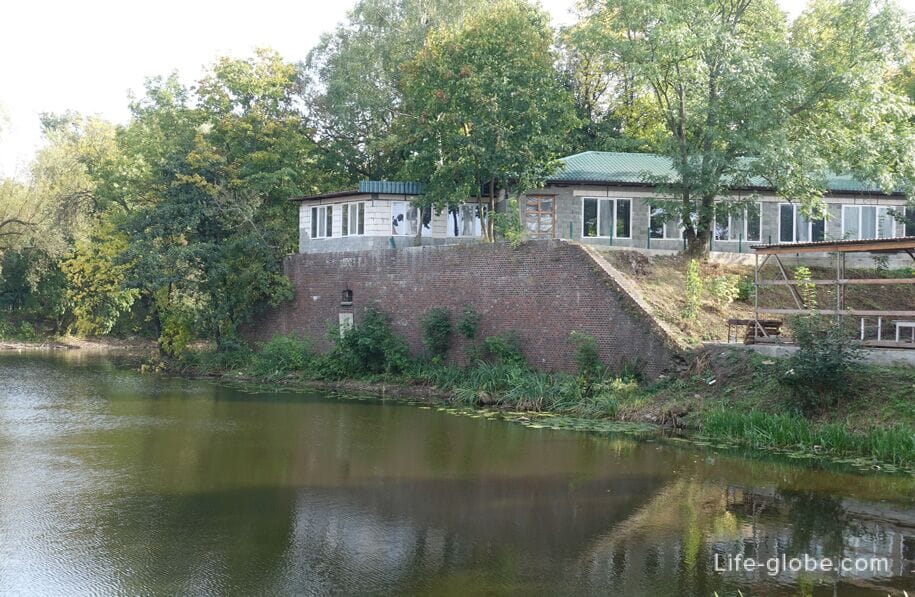
- Friedland Gate (Friedländer Tor), built around 1857 - 1862(65) years.
The gates are built of red ceramic bricks in the Neo-Gothic style. The facade has a decorative design, including sandstone sculptures made by the Berlin sculptor V.L. Sturmer.
Currently, the museum "Friedland Gate" is located in the walls of the gate.
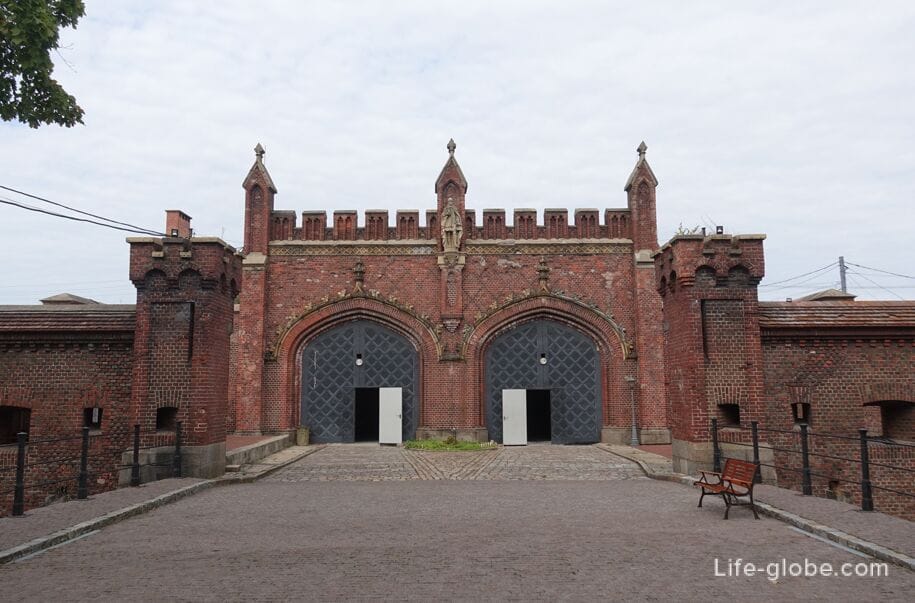
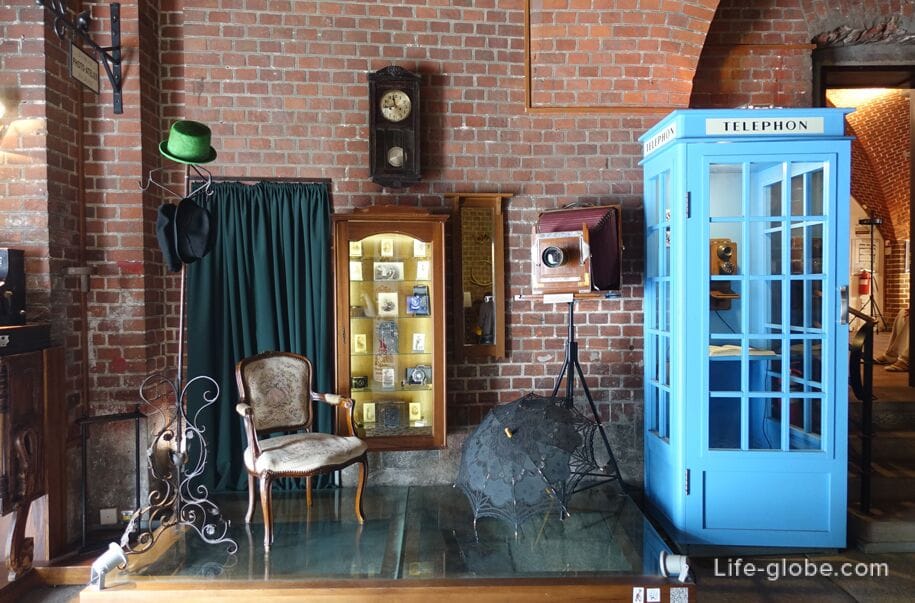
- bastion "Pregel", built in 1851-1862 by architect I. Strauss.
Initially, the bastion was an impressive fortification with moats, including internal ones.
In the early 1900s, the moats of the bastion were filled in, part of the roller bypass was dug, and only the reduit - the reduit of the bastion "Pregel" remained from the bastion.
Since 2015, the Night Wolves motorcycle club has been based on the territory of the reduit bastion, there is a cafe-bar and Fort Boyard. Read more about the reduit of the Pregel bastion...

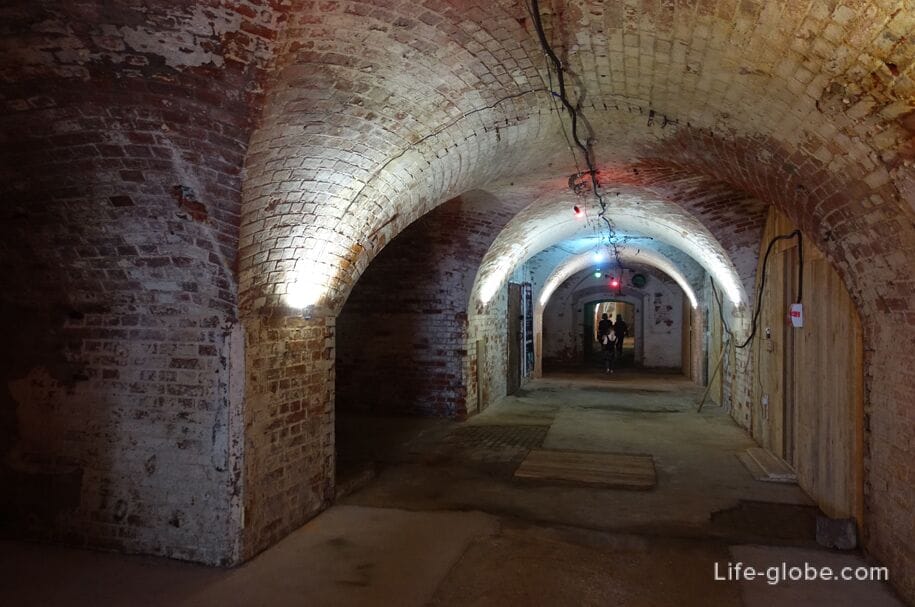
All accommodation facilities in Kaliningrad (hotels, apartments, guest houses, etc.), including in the city center and more remotely from it, can be viewed and booked here